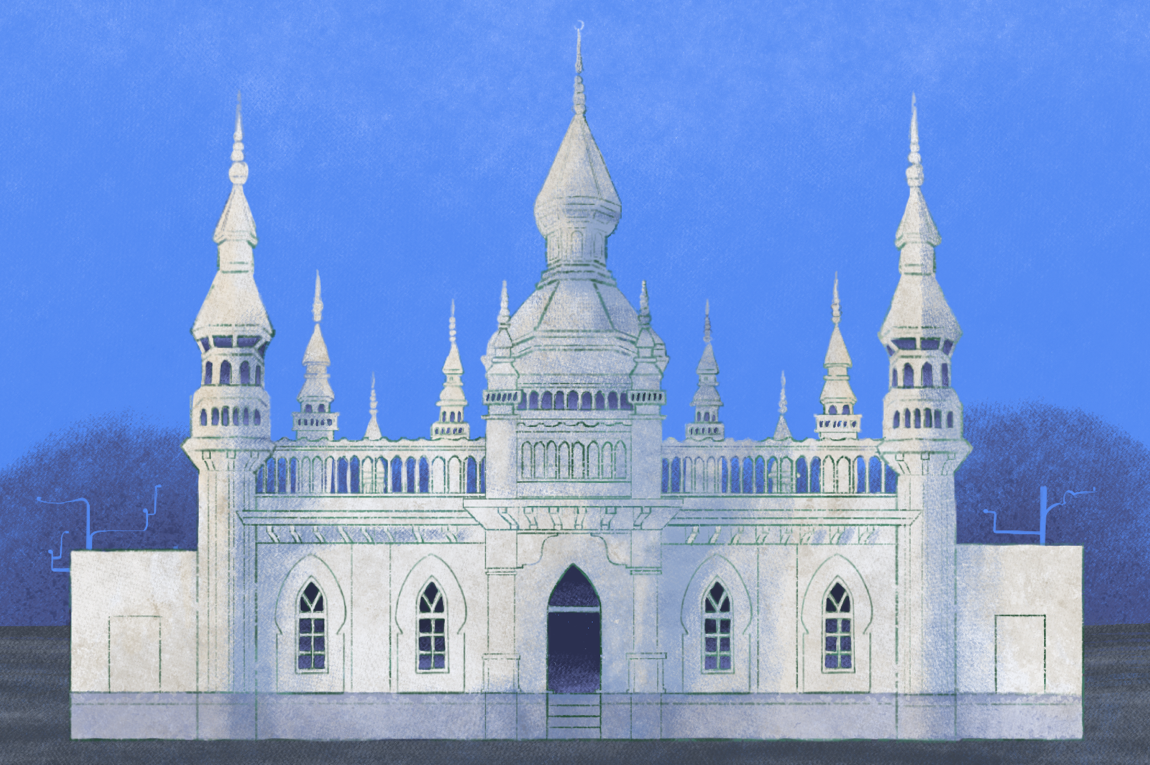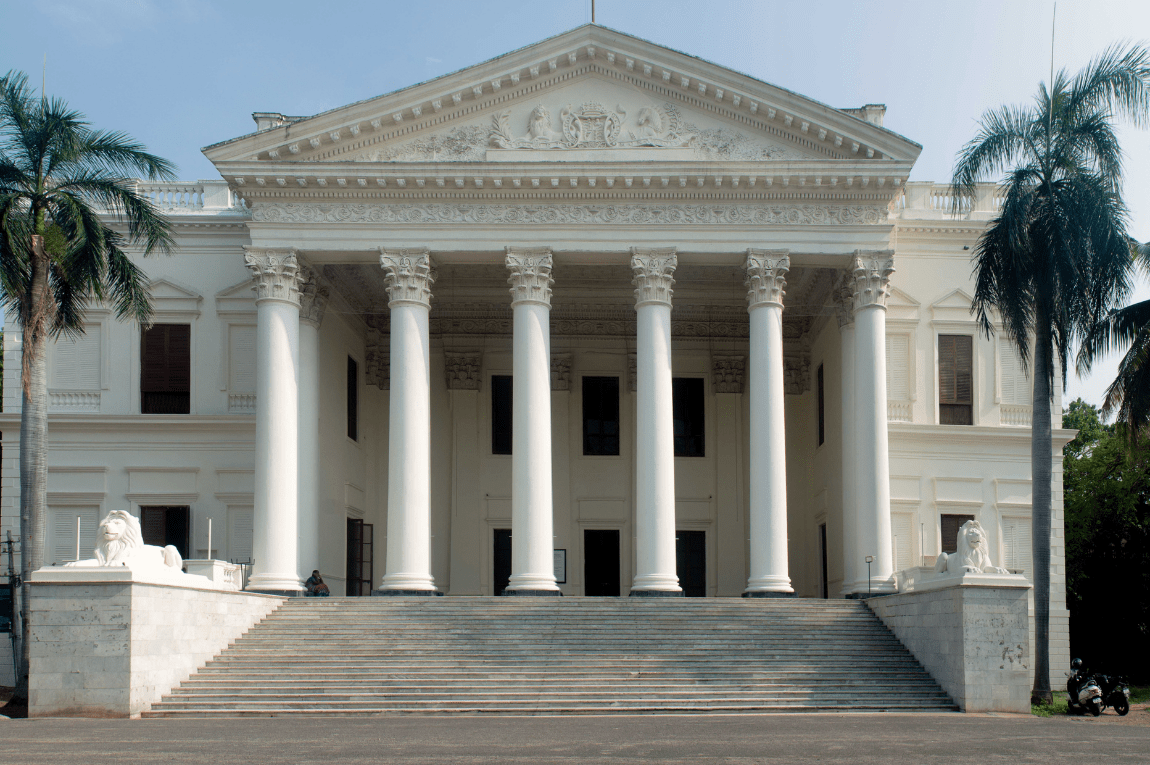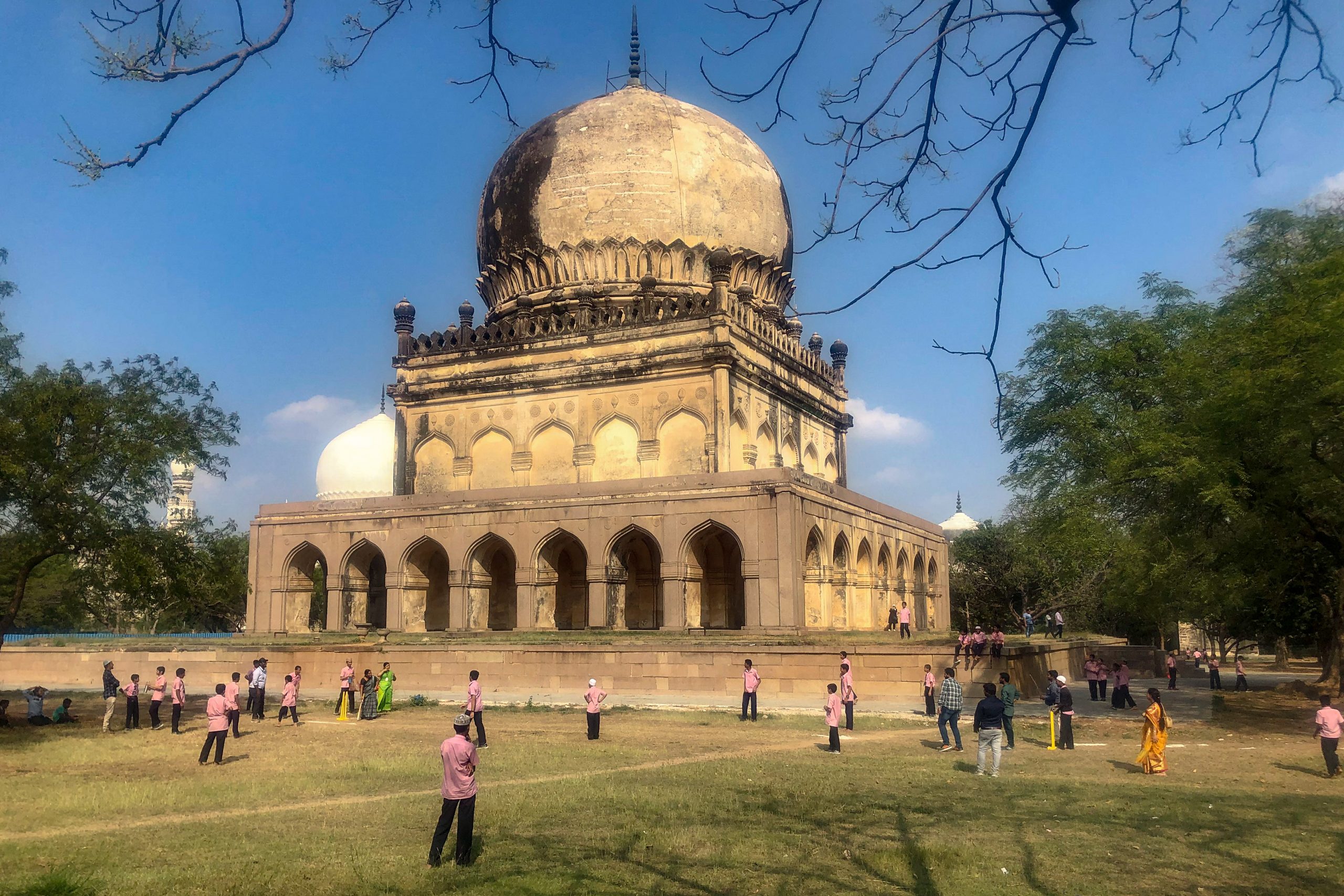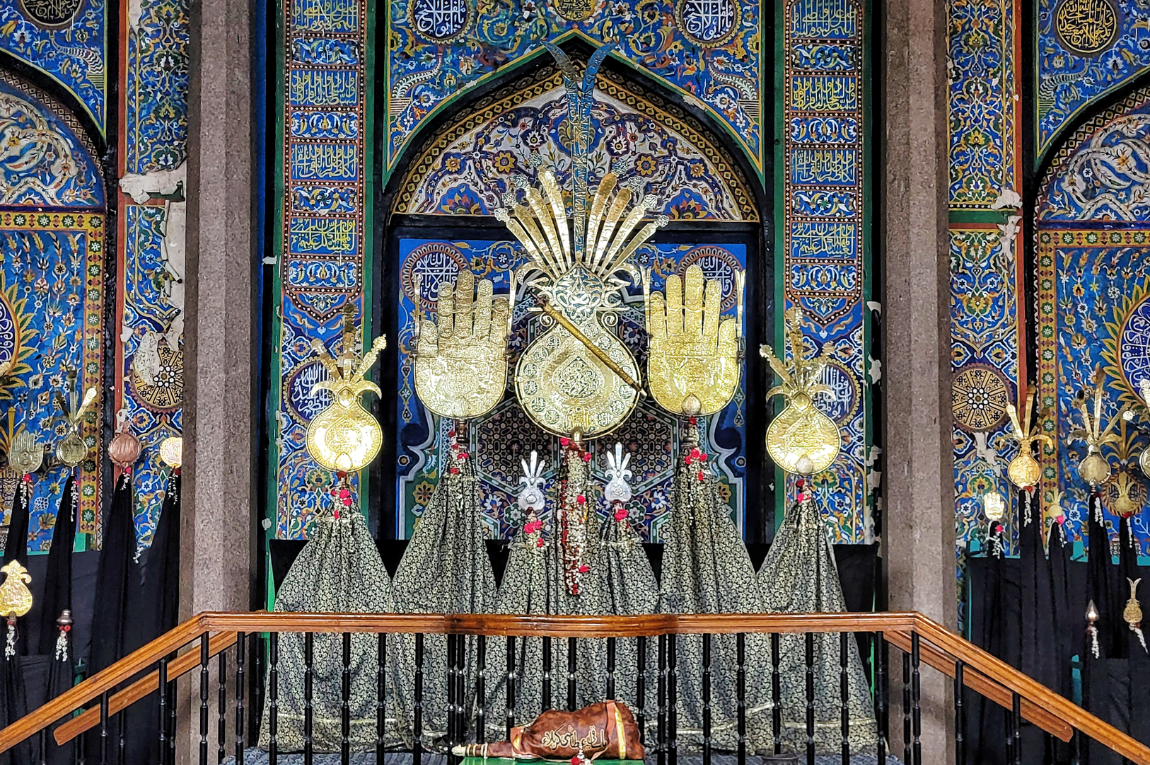It is easy to miss this Spanish-style mosque, despite the huge courtyard in front. Having lived all my life in Hyderabad, I have frequently travelled across the city and been in the area of the mosque a number of times, but I didn’t notice the Jama Masjid Aiwan-e-Begumpet until a year ago. Turns out I was not alone — only in 2018, after it was opened to people of all faiths, including women, did it seem to be more frequented.
The structure, also referred to as the Spanish Mosque, was built in 1906, and was commissioned by a Nawab of the aristocratic Paigah family, Sir Viqar ul Umra, then the Nizam’s prime minister. He is said to have initiated its construction after visiting Spain and being deeply influenced by the country’s architecture. He wouldn’t have been alive to see it through, but the construction of the mosque in Begumpet was completed by his successor. The Nawab is also known to have commissioned the Paigah Palace and the iconic Falaknuma Palace in Hyderabad. Side note: The mosque is also known as Jama Masjid Iqbal ud Daula, another name by which Viqar ul Umra was known.
The Jama Masjid Aiwan-e-Begumpet is a representation of the Moorish architectural style that originated in the Iberian Peninsula (comprising Spain and Portugal). Moorish architecture was distinguished by the use of geometric and vegetal compositions, intricate floral ornamentation, elaborate calligraphy, and horseshoe arches that find their roots in pre-Islamic Syria, among other unique features.
When I first discovered the mosque, the style of construction was what attracted me. It was not like the other mosques I’d seen, which usually had bulbous domes — this mosque looked more like a church, as it had more spires than domes. The distinctive minarets are topped with spires and atop the central spire is a crescent moon. To my eyes, the main hall, with its pillars and arches, gave off a decidedly European vibe. On the other hand, the arches inside are similar to those found in mosques in Africa, and the walls bear Turkish calligraphy.
According to P. Anuradha Reddy, the Convenor of Indian National Trust for Art and Cultural Heritage, Hyderabad, “This mosque is a very unique structure for its style and it is very well-maintained by the descendants of the family. The other structure that has Moorish architecture is the mosque in Gulbarga [in Karnataka], which is a much earlier one from the Bahmani period.” She adds that the mosque in Hyderabad bears some similarity to the Mezquita-Catedral de Córdoba in Spain — originally a mosque built in the 8th century CE that was later consecrated as a Catholic church in the 13th century. In fact, the interior sanctuary of the Jama Masjid Aiwan-e-Begumpet is accessed by French windows, with five bays surrounding them and oval pointed arches over them, in the manner of the Cordoba mosque.
On a recent visit, as I stepped into the compound, I felt a sense of contentment. Time seemed to slow down as I spent a few moments in quiet contemplation. This mosque, with its unique heritage, is a hidden gem for many of us from Hyderabad.
Our selection of stays across India, best visited for their design and style. Check in
Kavitha Yarlagadda is an independent journalist based in Hyderabad. She is passionate about writing, sustainability and nature, and likes to write about social and environmental issues. She is on Instagram at @kavithawrites.
Diya Paul is a Mumbai-based illustrator, and a designer at Paper Planes. She is on Instagram at @diyapaulart.










